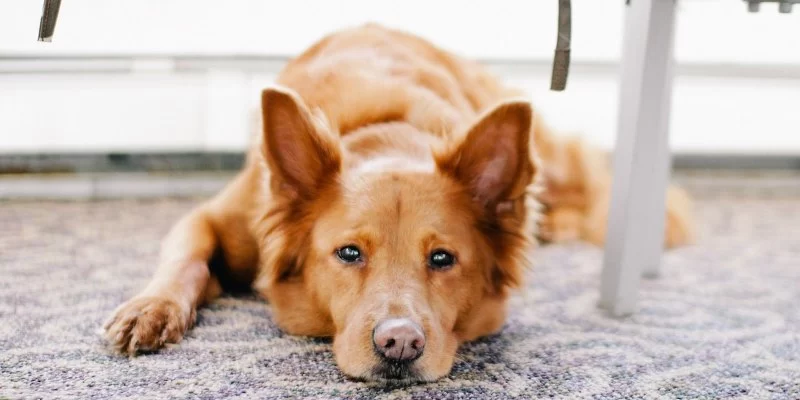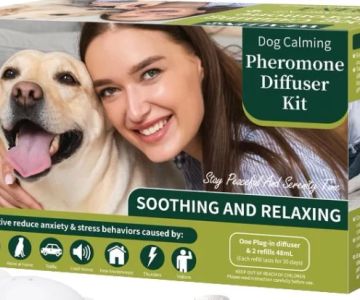Understanding Noise Phobia in Pets
Noise phobia is one of the most common anxiety disorders seen in both dogs and cats. From thunderstorms and fireworks to household appliances, sudden loud sounds can trigger severe fear and stress in pets. Unlike simple startle reactions, noise phobia is an intense, ongoing fear response that can cause lasting behavioral changes if not properly addressed.
In dogs, this condition often manifests through trembling, pacing, panting, or hiding. Cats, on the other hand, may flee, vocalize excessively, or even become aggressive out of fear. For many pet owners, watching their beloved companion panic during storms or celebrations can be heartbreaking—and that’s why understanding anxiety relief methods is so crucial.
Why Pets Develop Noise Phobias
There isn’t one single cause for noise-related anxiety in pets. Genetics, early experiences, and environmental factors all play a role. For example, herding breeds such as Border Collies or Australian Shepherds are more prone to sound sensitivities, possibly due to their heightened awareness. Similarly, pets who have experienced trauma—like abandonment, accidents, or loud environments—may develop noise phobia later in life.
Interestingly, the onset of noise anxiety can also correlate with aging. Senior dogs and cats often experience a decline in hearing or cognitive function, making them more confused and reactive to unexpected noises. This highlights the importance of tailoring anxiety relief strategies to each pet’s age and condition.
Recognizing the Signs of Anxiety During Noise Events
Every pet expresses fear differently. Some symptoms are obvious, like trembling or whining, while others can be more subtle. Recognizing these signs early helps owners intervene before anxiety escalates into panic.
Common Behavioral Signs Include:
- Hiding under furniture or in small spaces
- Pacing or restlessness
- Panting or drooling excessively
- Refusal to eat or drink
- Destructive behavior (scratching doors, chewing objects)
- In cats: excessive grooming or sudden aggression
Once these symptoms are identified, pet owners can implement behavioral conditioning and safe spaces to help their animals feel more secure.
Effective Anxiety Relief Strategies for Pets
The best anxiety relief for pets suffering from noise phobias often involves a combination of environmental management, behavior modification, and calming aids. Let’s explore several proven options.
1. Creating a Safe Environment
Start by designating a quiet, comfortable area in your home as a “safe zone.” This can be a closet, a basement room, or a cozy kennel lined with familiar bedding. Playing white noise or soft classical music can help mask triggering sounds. For cats, adding hiding boxes or elevated perches provides a sense of control and safety.
2. Desensitization and Counterconditioning
This behavioral method involves gradually exposing your pet to low-level recordings of the feared sound—like thunder or fireworks—while associating it with positive experiences such as treats or play. Over time, your pet learns that the noise doesn’t signal danger. Patience is key; this process can take several weeks or months, depending on the pet’s sensitivity.
3. Natural Calming Products
Many pet owners prefer starting with natural remedies. Calming supplements containing L-theanine, chamomile, or valerian root can ease stress without sedating your pet. Pheromone diffusers, such as Adaptil for dogs or Feliway for cats, mimic natural comfort signals and can be highly effective for mild to moderate anxiety.
For example, one customer at Hidden Brook Veterinary reported that her rescue dog, Milo, used to panic during thunderstorms. After using an Adaptil collar and white noise therapy for several weeks, his reactions diminished significantly—showing the power of combining environmental and natural calming aids.
4. Pressure Therapy
Products like anxiety wraps or compression shirts apply gentle, constant pressure to the pet’s body, similar to a comforting hug. Many pet parents notice an immediate calming effect during storms or fireworks displays. It’s a safe, non-invasive solution for mild anxiety.
5. Prescription Medications
For pets with severe noise phobia, veterinary-prescribed medications may be necessary. These can include fast-acting anti-anxiety drugs or longer-term behavior-modifying treatments. Common options include medications like alprazolam (Xanax), trazodone, or fluoxetine, depending on your veterinarian’s assessment.
At Hidden Brook Veterinary, we recommend scheduling a consultation before fireworks season or storm-heavy months to develop a tailored treatment plan. Medication is most effective when used alongside behavioral therapy and environmental management.
Holistic and Lifestyle Approaches
In addition to traditional remedies, holistic care can also support anxiety management. Techniques such as massage therapy, aromatherapy (using pet-safe essential oils), and acupuncture have been shown to help balance nervous system responses. Regular exercise and mental stimulation are also essential—bored pets are more likely to fixate on triggers like noise.
Case Study: Bella’s Story
Bella, a five-year-old Labrador, had severe thunderstorm anxiety. Her owner initially tried over-the-counter calming chews, but Bella’s stress persisted. After consulting a vet, they implemented a combined plan: prescription trazodone, daily exercise, and gradual noise desensitization. Within two months, Bella could sleep through mild storms without trembling. Her story illustrates how integrated approaches often yield the best long-term results.
Preventing Noise Phobias in Young Pets
Early socialization plays a key role in preventing sound-related anxiety. Puppies and kittens exposed to different noises—like vacuum cleaners, cars, or doorbells—during their developmental stages are less likely to develop phobias later in life. Gentle, positive exposure paired with rewards teaches them that noises are part of everyday life, not something to fear.
If you’ve recently adopted a young pet, consider playing soft background sounds at home to help normalize noise. Consistency and reassurance from the owner also reinforce feelings of safety and trust.
When to Seek Professional Help
If your pet’s anxiety causes self-injury, persistent hiding, or destructive behavior, professional guidance is necessary. Veterinarians and certified animal behaviorists can assess the root cause and recommend appropriate interventions. In many cases, early intervention can prevent the phobia from worsening.
Hidden Brook Veterinary offers behavioral consultations and anxiety management plans tailored to your pet’s unique needs. Their team can recommend safe medications, supplements, or desensitization programs to restore calm and confidence to your furry companion.
Helping Pets Feel Safe Again
Noise phobias can deeply affect a pet’s well-being, but with patience, understanding, and the right treatment strategy, your cat or dog can regain their peace of mind. Whether through natural remedies, behavioral therapy, or veterinary care, there’s always a way to help them feel safe and secure—no matter how loud the world gets outside.












